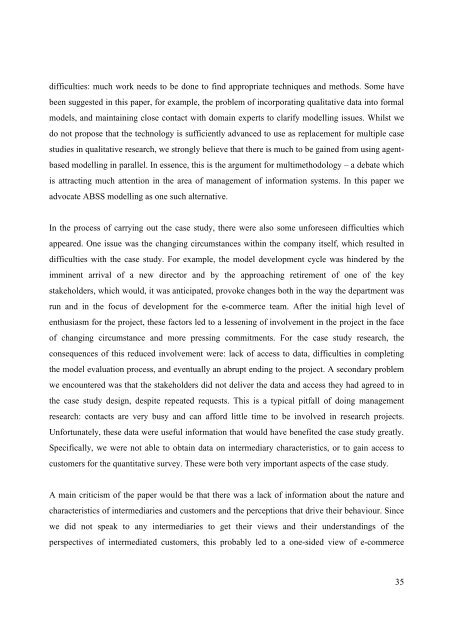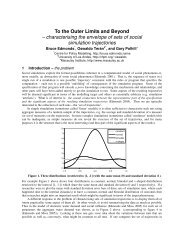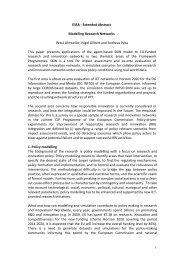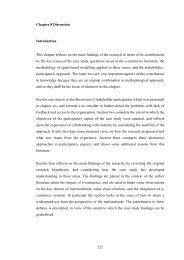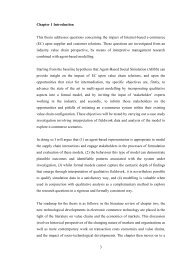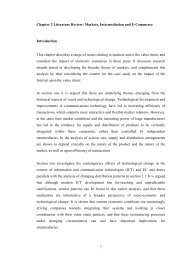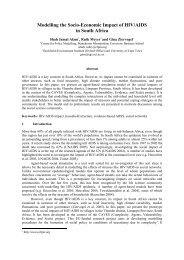1 Agent-Based Modelling Incorporating Qualitative and Quantitative ...
1 Agent-Based Modelling Incorporating Qualitative and Quantitative ...
1 Agent-Based Modelling Incorporating Qualitative and Quantitative ...
You also want an ePaper? Increase the reach of your titles
YUMPU automatically turns print PDFs into web optimized ePapers that Google loves.
difficulties: much work needs to be done to find appropriate techniques <strong>and</strong> methods. Some have<br />
been suggested in this paper, for example, the problem of incorporating qualitative data into formal<br />
models, <strong>and</strong> maintaining close contact with domain experts to clarify modelling issues. Whilst we<br />
do not propose that the technology is sufficiently advanced to use as replacement for multiple case<br />
studies in qualitative research, we strongly believe that there is much to be gained from using agentbased<br />
modelling in parallel. In essence, this is the argument for multimethodology – a debate which<br />
is attracting much attention in the area of management of information systems. In this paper we<br />
advocate ABSS modelling as one such alternative.<br />
In the process of carrying out the case study, there were also some unforeseen difficulties which<br />
appeared. One issue was the changing circumstances within the company itself, which resulted in<br />
difficulties with the case study. For example, the model development cycle was hindered by the<br />
imminent arrival of a new director <strong>and</strong> by the approaching retirement of one of the key<br />
stakeholders, which would, it was anticipated, provoke changes both in the way the department was<br />
run <strong>and</strong> in the focus of development for the e-commerce team. After the initial high level of<br />
enthusiasm for the project, these factors led to a lessening of involvement in the project in the face<br />
of changing circumstance <strong>and</strong> more pressing commitments. For the case study research, the<br />
consequences of this reduced involvement were: lack of access to data, difficulties in completing<br />
the model evaluation process, <strong>and</strong> eventually an abrupt ending to the project. A secondary problem<br />
we encountered was that the stakeholders did not deliver the data <strong>and</strong> access they had agreed to in<br />
the case study design, despite repeated requests. This is a typical pitfall of doing management<br />
research: contacts are very busy <strong>and</strong> can afford little time to be involved in research projects.<br />
Unfortunately, these data were useful information that would have benefited the case study greatly.<br />
Specifically, we were not able to obtain data on intermediary characteristics, or to gain access to<br />
customers for the quantitative survey. These were both very important aspects of the case study.<br />
A main criticism of the paper would be that there was a lack of information about the nature <strong>and</strong><br />
characteristics of intermediaries <strong>and</strong> customers <strong>and</strong> the perceptions that drive their behaviour. Since<br />
we did not speak to any intermediaries to get their views <strong>and</strong> their underst<strong>and</strong>ings of the<br />
perspectives of intermediated customers, this probably led to a one-sided view of e-commerce<br />
35


